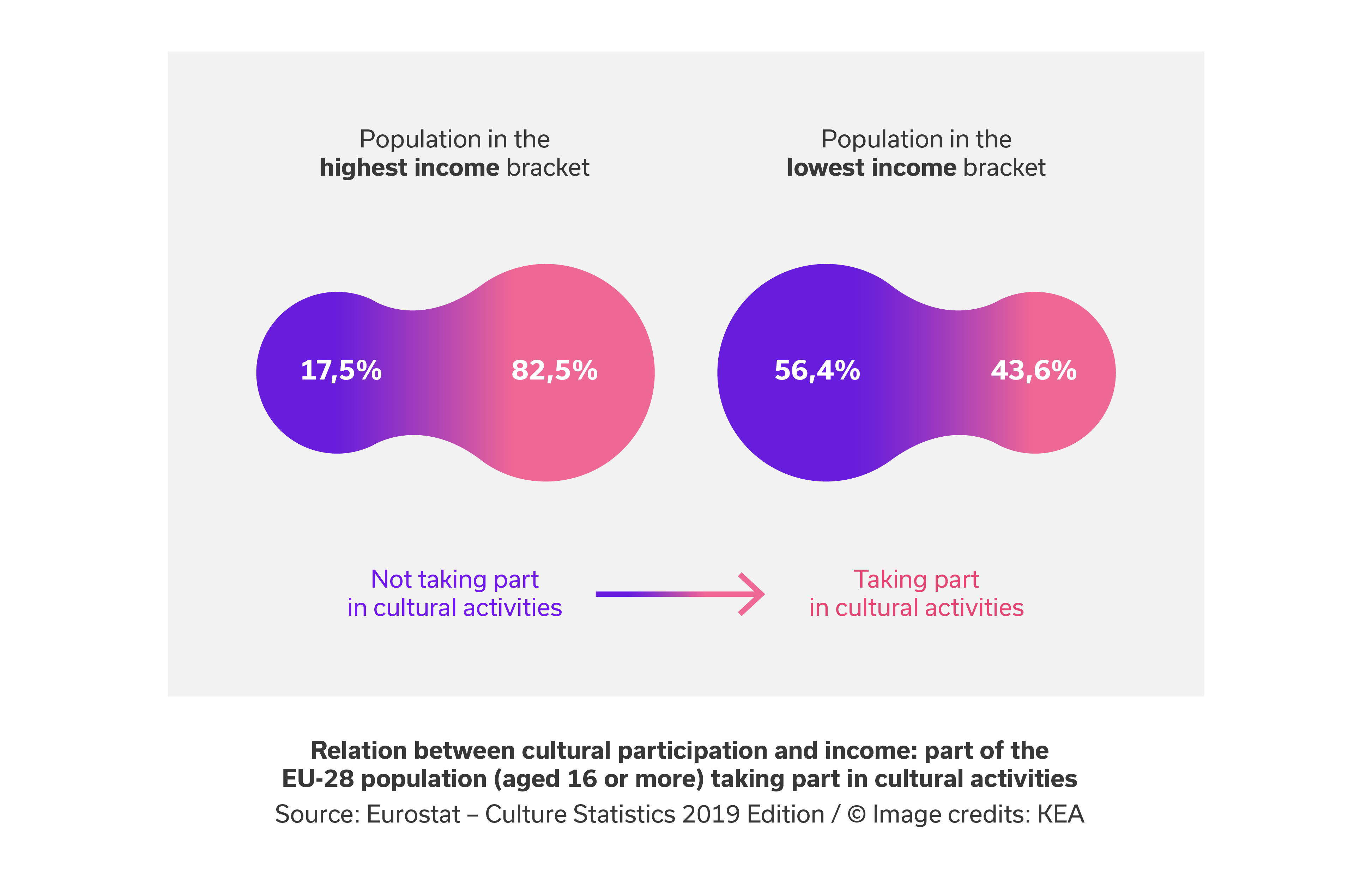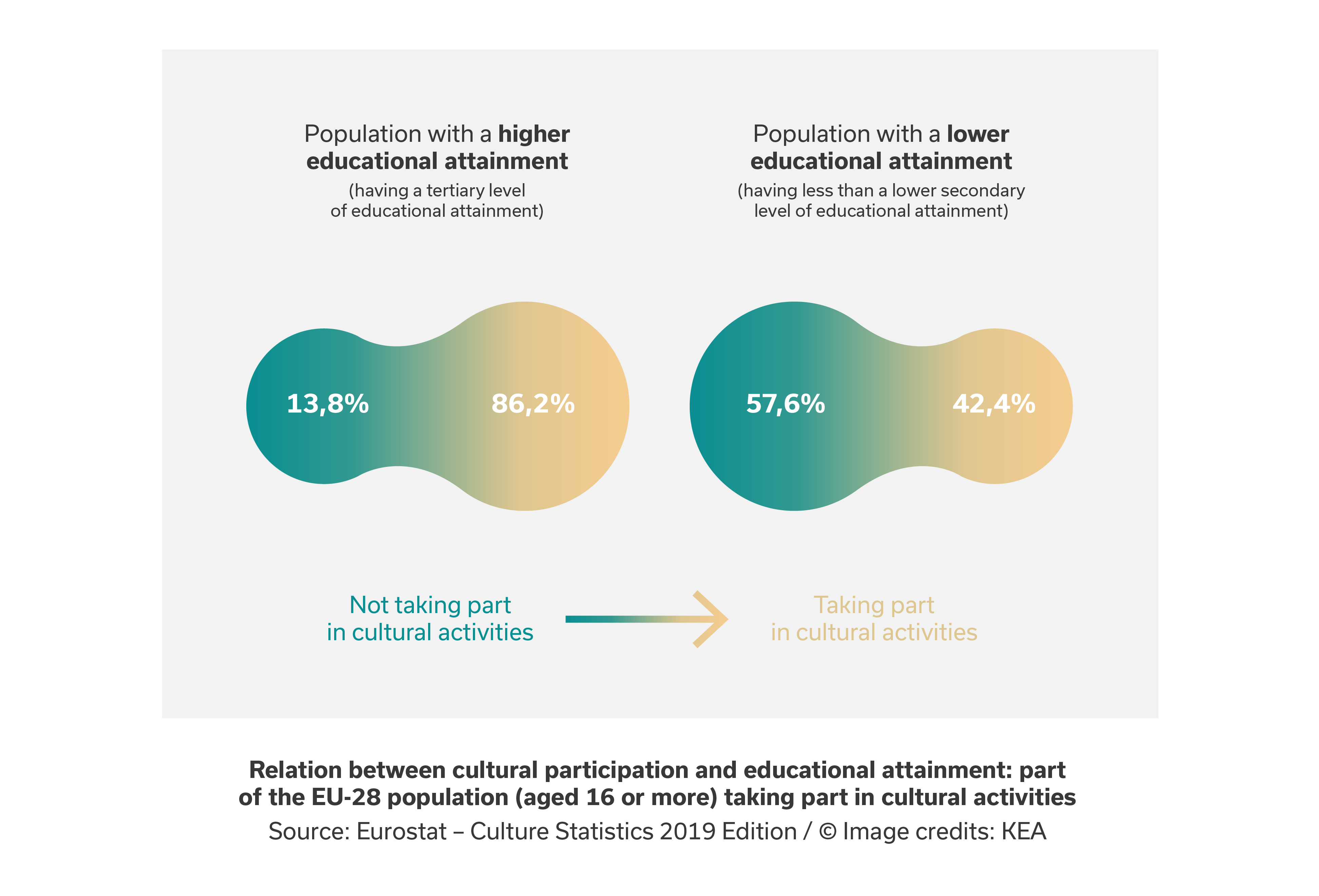
Art and culture, cultural workers and institutions are playing a key role in the effort to achieve social cohesion outcomes.
Cultural activities are essential means to foster democratic values such as tolerance, non-discrimination, solidarity, freedom of expression and respect for human dignity. They provide a powerful way to empower people: art practices and cultural activities contribute to rebuilding confidence in individuals whose lives have been shattered. Culture participation enables shared social experiences. It allows various communities to contribute to social interactions. At a time when populations are moving for whatever reason, it is also about stimulating intercultural dialogue and participation, ultimately leading to a more cohesive and peaceful society. In the current fast changing social environment, integration of and national minorities is one of the pillars of social cohesion.
This article proposes a short mapping and a critical analysis of the legal and policy situation, reviewing European competence and initiatives in the social field that relate to culture. It identifies current shortcomings and proposes policy recommendations for cities wishing to ensure that in the future, EU social policy serves to foster social inclusion by making better use of cultural resources.
Cultural policy is about ensuring that the arts and humanities are fully engaged in shaping the future of the city and its citizens, mobilising empathy, imagination and beauty to support a sustainable and qualitative way of life. Much depends of how openly and inclusively cultural policies are designed as well as to which extent those policies are integrated in social policies. Unfortunately, EU social policy currently fails to embrace the cultural dimension of social inclusion.
However, as shown by Eurostat (Eurostat – Culture Statistics 2019 Edition) a lot remains to be done to ensure that cultural activities contribute to social inclusion.
- There are direct correlations between cultural participation and income, with 82.5% of the EU-28 population (aged 16 or more) in the highest income bracket taking part in cultural activities, in comparison to 43.6% in the lowest income bracket. Financial reasons were the second most frequently cited reason for not taking part in cultural activities.
- Cultural participation directly correlates to educational attainment; 86.2% of the EU-28 adult population (aged 16 years or more) with a tertiary level of educational attainment reporting to have taken part in a cultural activity in the last 12 months, compared to 42.4% of people with no more than a lower secondary level of educational attainment.


Acknowledging and measuring the cultural dimensions of social inclusion
EU policy and initiatives (notably the Europe 2020 Strategy) primarily conceptualises social inclusion in terms of economic empowerment, as connected to poverty. There remains a crucial gap in terms of recognising and measuring the cultural dimensions of social inclusion and as related to interconnections between cultural participation and social inclusion.
While, in accordance with Article 4 TFEU, the EU has shared competences in the area of social policy, these competences are limited to specific aspects “as defined in the Treaty” (TFEU Article 4b). European social policy has the objectives of:
- the promotion of employment;
- improved living and working conditions;
- proper social protection;
- dialogue between management and labour;
- the development of human resources with a view to lasting high employment;
- the combating of exclusion (TFEU Article 151).
Article 153 of the TFEU hereby delineates those specific fields in which the Union shall “support and complement the activities of the Member States” (TFEU Article 153). These fields hereby relate essentially to improvement of the working environment to protect workers’ employment, rights, health and safety. Alinea j) also mentions “the combating of social exclusion”.
The proclamation of the European Pillar of Social Rights at the Social Summit for Fair Jobs and Growth (Gothenburg Summit) in 2017 has given a new impetus to the social dimension of Europe’s 2020 Strategy. It simultaneously cements the lack of recognition for the cultural dimensions of ‘social inclusion’ and the interconnections between cultural participation and social inclusion. The non- incorporation, of cultural rights into the European Social Pillar is an issue. Additionally, while the Pillar recognises that “[e]veryone has the right to quality and inclusive education, training and life-long learning in order to maintain and acquire skills that enable them to participate fully in society and manage successfully transitions in the labour market” (European Pillar of Social Rights 2017), the Social Scoreboard – which helps monitor the implementation of the Pillar – does not implement any cultural indicators linked to lifelong learning; even though cultural awareness and expression is explicitly mentioned as a key competence for lifelong learning.
Channelling culture in European social funding programmes
All of the above raises questions in relation to future financing – particularly for culture-led projects for social inclusion. The new proposed ESF+ fund will centralise and merge all previous programmes. ESF+ will function as “the EU’s main instrument to invest in people and to implement the European Pillar of Social Rights”. At least 25% of ESF+ funding will be earmarked for ‘social inclusion’. Additionally, the thematic concentration requirements of ESF+ align with those of the Europe’s 2020 Strategy, namely: 1) tackling poverty and social exclusion; and 2) improving employment opportunities for young people.
In the proposal, no references are made to culture. This is particularly regrettable concerning the potentially productive synergies with Horizon Europe’s – the successor of Horizon 2020 – second Cluster: Culture, Creativity and Inclusive Society, which stresses that “[t]o promote new thinking and provide solutions to social and economic challenges, the cultural and creative sectors should be integrated in research and innovation processes”. The current non-recognition of the cultural dimensions of social policy functions as a major impediment for a transversal, cross-sectoral EU approach to social inclusion. Additionally, it highlights the broader issue of the existing siloes at EU level between policy areas; particularly between the European Pillar of Social Rights and EU social policy, the Urban Agenda and the New European Agenda for Culture.
An example of good practice, in terms of the recognition of the interconnections between cultural participation and social inclusion, can be found in France, where the 1988 Law against social exclusion emphasises the contribution of culture and recognises the key role of NGO’s and in particular of federations of adult education (which signed a charter ‘Culture-adult education). This subsequently led to cooperation between the Ministry of Culture and the Ministry of Social Affairs in support of equal opportunities in access to culture for disadvantaged audiences.
KEA recommendations for social policy to work with culture
- Better Knowledge
- Broaden and collect qualitative data on cultural participation at EU level.
- Address the gap in terms of recognising and measuring the cultural dimensions of social inclusion as well as the relation between cultural participation and social inclusion. EU indicators used to measure ‘social inclusion’ should be improved to capture the cultural dimensions of social inclusion.
- Document Member States’ and cities’ policies on integration of cultural policy in social policy objectives and enabling cross-sectoral practices between culture and social departments.
- Commission research documenting the social impact of cultural investment and good practices in cultural services addressing social inclusion.
- Better Regulation
- Review the European Pillar of Social Rights and EU social policy to incorporate the cultural dimension of social inclusion. This would facilitate future funding of culture-led projects for social inclusion (ESF+, Horizon Europe, Invest EU programme).
- Extend the work of the Urban Partnership on the European Pillar of Social Rights and the Urban Agenda (2016) (with action so far having been limited to the specific context of the Urban Partnership for Jobs and Skills) to the issue of social inclusion.
- Demand EU social policy programmes to complement the Creative Europe Programme with a view to enable cities to implement culture-led inclusion in line with the Workplan Culture (2019-2022) (2018) to overcome silos.
- Influence the governance structure of the Urban agenda and the European Urban Initiative to ensure that culture is taken into account in the setting up of social policy objectives and funding. Propose the establishment of a structured dialogue with the Steering and Supervisory board.
- Better Funding
- Setting up of a pilot programme with the support of the European Parliament devoted to culture for social inclusion in line with the 2015 EP Resolution on the Urban Dimension of EU Policies.
- Earmark funding for culture and social inclusion across relevant funding programmes (notably ESF+, ERDF, Invest EU). Make funding accessible to cities in partnership with cultural and social stakeholders (cultural services, cultural entrepreneurs, not-for-profit organisations).
Background note:
This article originates from research work carried out in the context of the Urban Agenda launched in May 2016 with the Pact of Amsterdam and a recent assignment for the city of Espoo (Finland).